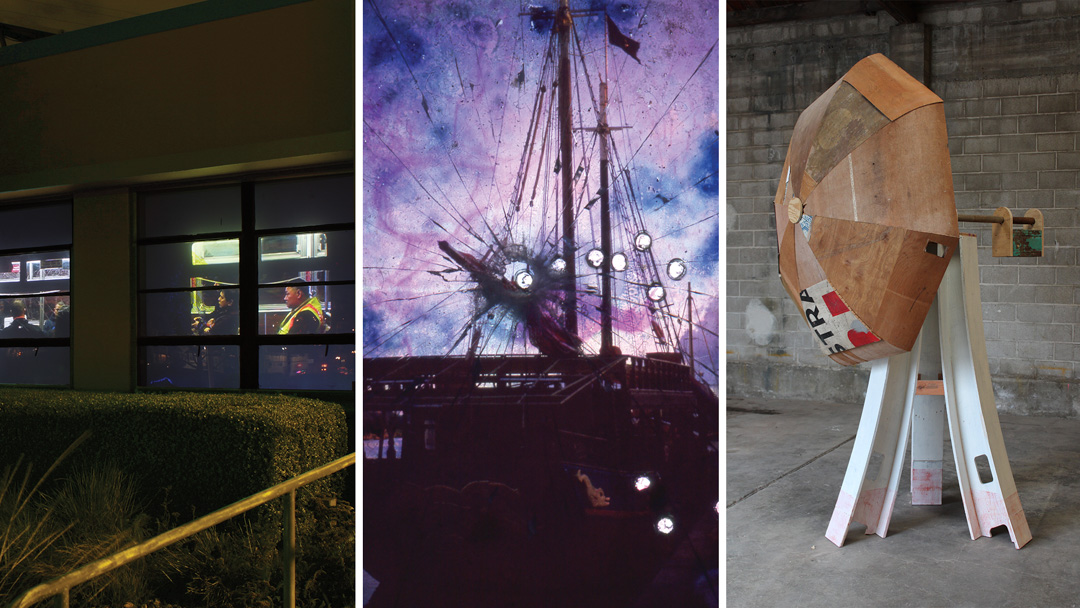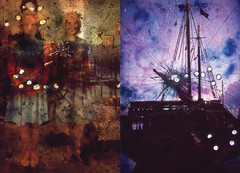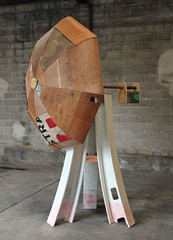
January 2, 2013
FOR IMMEDIATE RELEASE
When:
Reception-Friday, January 25, 5-9pm
Reception-Saturday, January 26, 1-3pm
Additional viewing hours-Tuesday, January 29, 5-7pm
Artist panel discussion- Tuesday, January 29, 7pm at 401 Tunnel Ave.
Where:
Art Studio located at 503 Tunnel Ave., San Francisco, CA
Admission is free and open to the public, all ages welcome, wheelchair accessible.
San Francisco, CA–The Artist in Residence Program at Recology San Francisco will host an exhibition and reception for current artists-in-residence Michael Damm, Julia Goodman, and Jeff Hantman on Friday, January 25, from 5-9pm and Saturday, January 26, from 1-3pm. Additional viewing hours will be held on Tuesday, January 29, from 5-7pm. An artist panel discussion will follow at 7pm at 401 Tunnel Avenue. Please note the new Saturday hours and additional Tuesday viewing time. This exhibition will be the culmination of four months of work by the artists who have scavenged materials from the dump to make art and promote recycling and reuse.
|
Damm’s second installation work, viewable only during exhibition hours, uses images from a scavenged collection of slides taken by a photojournalist. Damm has layered multiple shots of specific scenes to create complex readings of past events and explore perceptions of time, history, and representation. The majority of photographs were taken at political events in the 1980s that have long receded from public memory. Deprived of their temporal context and documentary underpinnings these scenes of public diplomacy and governmental machinations become generically enigmatic instead of historically significant. Through the overlayering of multiple shots—each minutely different, yet of the same scene—Damm has created images that move into one-another and then quickly slip out of reach. Work captures the banality that surrounds the pursuit of the photographic “decisive moment,” while also speaking to the slippery nature of documentation in general, and how some events are historicized while others are relegated to the landfill. Damm received an MFA from Mills College. He has exhibited widely in the Bay Area including at Yerba Buena Center for the Arts and Catharine Clark Gallery in San Francisco, and has exhibited in venues internationally including in Brazil, Germany, England, and Macedonia. |
 Julia Goodman: Rag Sorters and Star Gazers Julia Goodman: Rag Sorters and Star GazersThough Julia Goodman’s primary medium is paper, which she makes by hand and uses to create sculptural forms, the vast offerings of the dump have inspired her to venture from this predominantly muted, monochromatic world and explore new materials and vivid colors. A found collection of water-damaged glass photographic slides, in combination with a personal interest in astronomy, has resulted in a body of work that references the power of the night sky. Resulting images are dreamy views of terrestrial scenes merged with celestial forces. Other works address ideas of navigation, and the role of the stars as literal and figurative guides. In a separate body of work, Goodman returns to her paper-making practice and looks at the intertwined relationship women have had with rag paper over centuries—both as procurers and providers of the fabrics used in its production. Bringing a San Francisco focus to this history, Goodman interviewed a former Recology employee and learned that it was not until compactor trucks were widely used in 1964 that the city’s garbage collectors stopped gathering rags for recycling. Prior to this date, collected fabrics were brought to a room where female employees sorted them, doing dirty and difficult work. Having learned the names of several of these women, Goodman set out to honor them in her own papermaking practice. She replicated their process by sorting fabrics she had scavenged and then pulped the material. Using pre-1964 elegant fonts found in ephemeral materials such as Metropolitan Opera programs, Goodman recreated the women’s names in carved molds. She then pressed the pulped rags into her carvings to create her tributes. Elevated from their humble employment, Rita Bianchi, Maria Tringale, and Josephine Grosso’s names appear in grand style in Goodman’s paper relief works. Goodman has an MFA from the California College of Arts and Crafts and a BA in International Relations and Peace and Justice Studies from Tufts University. She has exhibited widely in the Bay Area and has participated in residencies at J.B. Blunk Residency in Inverness, California, and at the Georgia Tech Research Institute in Kona, Hawaii. |
 Jeff Hantman: Unassigned Jeff Hantman: UnassignedJeff Hantman combines a range of techniques and materials to create three-dimensional paintings that bow and bulge out from the wall. Hantman’s background as a woodworker informs his process which requires bending and shaping found materials, especially plywood, to create the rounded forms he uses as his canvases. Works are covered with materials chosen for their graphic or textual quality and then layered with his silkscreened and painted imagery. Signs of wear, stains, paint, and other remnants of the material’s previous use are incorporated into the pieces that are influence by deteriorating structures such as old barns or water towers, as well as personal memories of places and events. While at Recology, Hantman has expanded his practice to include free-standing sculptural works. Now viewers can walk around his forms and view the frameworks that underlie his characteristic curved shapes, seeing interiors which are as visually compelling as their exteriors. Some works include a mechanical element, and the combination of this with Hantman’s weatherworn iconography results in sculptures that appear like obsolete contraptions or mysterious machines from a bygone era. Hantman describes these new pieces as the manifestation of childhood daydreams—fantasy objects built from the unlimited contents of the toy box that is the Public Disposal and Recycling Area. Much like his three-dimensional wall works that defy easy categorization, these free-standing assemblages provide space for interpretation rooted in imagination and memory. Hantman received a BFA in printmaking from the Rhode Island School of Design. He has participated in residency programs at Kala Institute in Berkeley and the Djerassi Resident Artist Program in Woodside, California. His work is in the collection of the Alameda County Arts Commission. |
|
The Artist in Residence Program at Recology San Francisco is a one-of-a-kind program established in 1990 to encourage the conservation of natural resources and instill a greater appreciation for the environment and art in children and adults. Artists work for four months in studio space on site, use materials recovered from the Public Disposal and Recycling Area, and speak to students and the general public. Over ninety-five professional Bay Area artists have completed residencies. Applications are accepted annually in August. |
 Michael Damm:
Michael Damm: